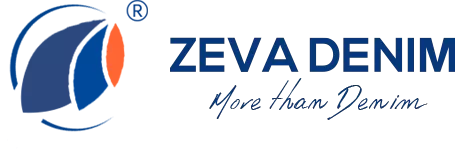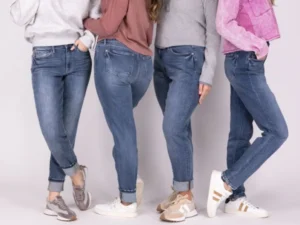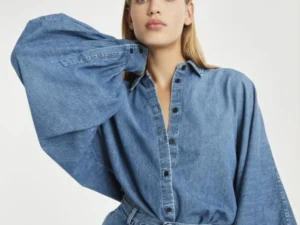Denim has been a fashion staple for more than a century. It is a strong and durable fabric that has become synonymous with casual wear, especially jeans. Denim is not only known for its durability and versatility but also for its manufacturing weight. The weight of the jeans’ fabric affects its look and feel. In this article, we’ll explore jeans fabric weight and what it means in jeans.
What Is the Weight of Jeans Fabric?
Denim grammage is a measure of how much a square yard of denim weighs. It is usually measured in ounces. The weight of denim fabric affects the texture, drape, and durability of the fabric. Denim weight is heavier for denser and stiffer fabrics and lighter weight for lighter and softer denim fabrics.

- Weight classification
Denim can be divided into three categories based on weight: lightweight, middleweight, and heavyweight. Lightweight denim typically weighs less than 9oz per square yard. Midweight denim weighs between 9 and 12 ounces per square yard. Heavyweight denim weighs over 12 ounces per square yard.
Heavyweight Jeans Fabric
Heavyweight denim is typically 14 ounces per square yard or more. Heavyweight denim is thicker, denser, and more durable than lightweight denim. The higher weight also makes the heavyweight denim stiffer for a stiffer feel. This stiffness is both an advantage and a disadvantage for heavyweight denim. It creates a unique look and feel that many people love, but the denim can also be too thick for some to wear.
- Pros and Cons
The benefits of heavyweight denim include better durability, longer lifespan, and a unique look due to the stiffness of the fabric. Disadvantages include poor breathability and poor comfort. Heavy denim can feel hot and tight in warm weather conditions.
- Jeans style
Heavyweight denim is generally used to make more durable and thicker jeans. These jeans are heavier in texture and can withstand more stress and wear. They are often used to make classic work pants, jackets, and jeans because they offer better protection and durability.
At the same time, they can also be used to design more complex and fashionable styles, such as straight-leg pants, mopping pants, etc. Heavier-weight denim can be used to make various types and styles of pants, depending on the designer’s ideas and creativity.
Some of the most famous examples of heavyweight denim include Levi’s 501 jeans and Raw Edge jeans from brands like Nudie Jeans and APC.
Midweight Jeans Fabric
Midweight denim typically weighs between 10 and 12 ounces per square yard. It’s a versatile fabric that strikes a balance between lightweight and heavyweight denim. Midweight denim is heavier and stiffer than lightweight denim, but softer and more flexible than heavyweight denim.
- Pros and Cons
The advantages of midweight denim include a balance between durability and comfort. The fabric is durable enough to withstand rough, abrasive activities like manual labor, yet comfortable enough for everyday wear. The stiffness of midweight denim creates a unique look and feel without sacrificing comfort and breathability.
- Jeans style
Midweight denim is often used to make jeans that are lighter and softer. These jeans are relatively lightweight and more suitable for moderate-intensity activities. They are commonly used to make casual jeans, baggy pants, shorts, etc., as they provide a more comfortable fit and are better suited for light activities in everyday life.
At the same time, medium-weight denim can also be used to design complicated or fashionable styles, such as leggings, jumpsuits, etc. Mid-weight denim works well for comfortable, casual, and on-trend jeans.
Some mid-weight jeans include Levi’s 511 jeans and Wrangler’s Retro Slim Straight jeans.
Lightweight Jeans Fabric
Lightweight denim typically weighs between 6 and 10 ounces per square yard. It’s softer and more stretchy than heavy denim for a more comfortable fit and easier movement. Lighter weight and more breathable, perfect for warmer weather conditions.
- Pros and Cons
The benefits of lightweight denim include better breathability, more comfort, and a softer feel. Drawbacks include less durability and a more casual look. Lightweight denim is also more prone to damage and fraying, making it less suitable for rough-abrasive activities like manual labor.
- Jeans style
Lightweight Denim is usually used to make light and thin jeans suitable for summer wear. The styles of this kind of jeans are usually casual shirts, summer dresses, loose thin shorts, or cropped pants. Lightweight denim is also suitable for fancy skinny jeans, as well as some trendy jeans with special designs and fabric treatments. In conclusion, lightweight denim is suitable for making comfortable, casual, and stylish jeans, especially those that need to be worn in hot weather.
AG Adriano Goldschmied’s ‘The Protege’ jeans and J.Crew’s ‘484’ selvage jeans are some examples of lightweight jeans.
Choose the Right Weight Jeans Fabric for Your Jeans
You’ll want to determine the weight of your jeans based on several factors: Your body type, climate, and season as well as occasion and style must be considered.
- Body Type
Those with a fuller or muscular build may prefer heavier-weight denim as it provides more structure and support to the body. Lighter denim is usually better for slimmer bodies because it offers more flexibility and comfort.
Climate & Season: Heavyweight denim is great for cold or cool weather as it provides both warmth and insulation. Lightweight denim is better for warmer weather conditions as it is more breathable and comfortable.
- Occasion and Style
The occasion and style of the jeans should also be considered. Heavyweight denim is perfect for casual and rugged looks like workwear and utilitarian styles. Lightweight denim is usually better for casual and relaxed occasions.
Conclusion
Jeans fabric weight is an important factor to consider when shopping for jeans. Weight affects the feel, texture, and durability of a fabric, so it’s important to understand this. Whether you prefer heavy or lightweight denim, it’s important to consider your body type, climate, and season as well as the occasion and style. It’s easier to find the perfect pair of jeans that are comfortable, durable, and stylish once you take all of the above into consideration.





